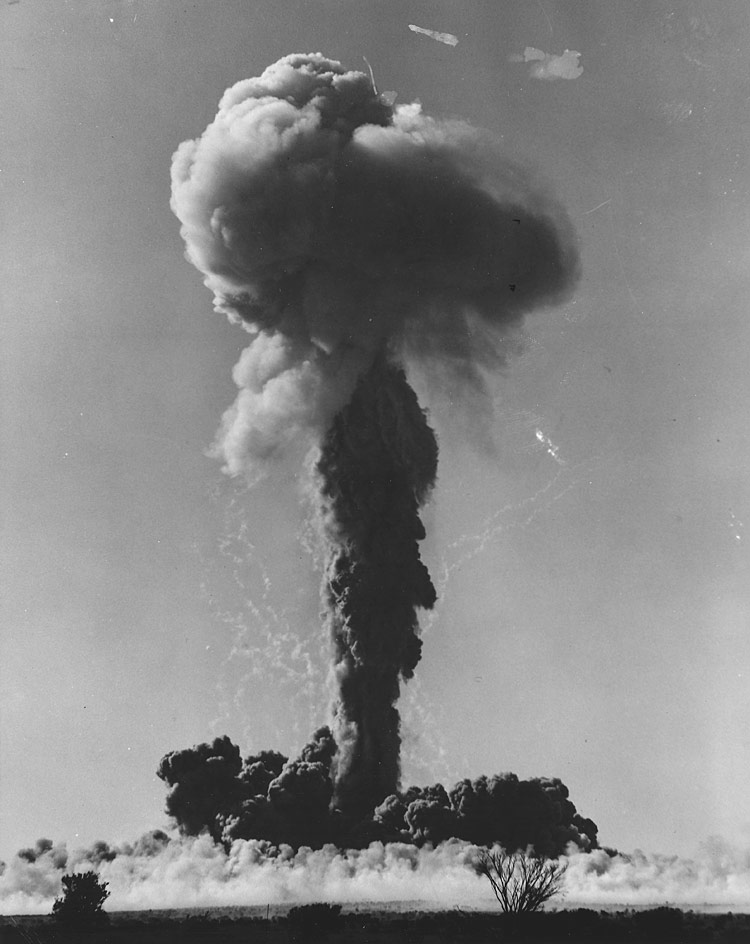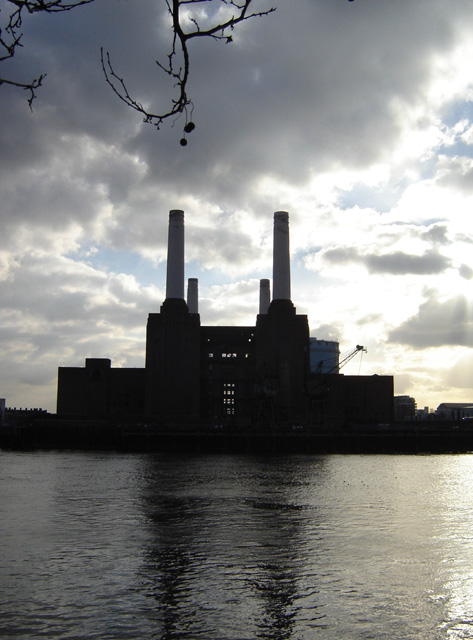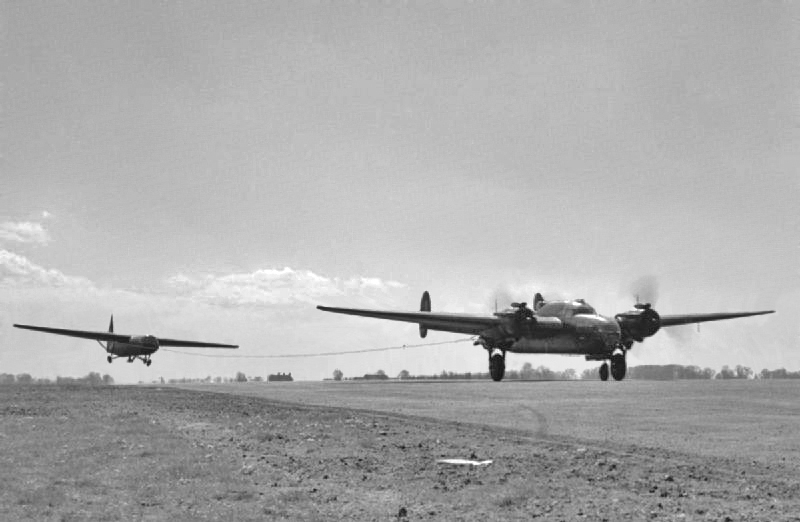|
Edwin Flavell (Royal Air Force Officer)
Squadron Leader Edwin James George "Ted" Flavell (25 April 1922 – 24 February 2014) was the pilot of the No. 49 Squadron RAF Vickers Valiant bomber which dropped Britain's first live atomic bomb ('' Blue Danube'') during Operation Buffalo at Maralinga, South Australia, on 11 October 1956. Early life Ted Flavell was born in Battersea, London Borough of Wandsworth, on 25 April 1922, the first son of Edwin William Conquest Flavell (1898–1993), a British Army officer who served in World War I and World War II, eventually rising to the rank of Brigadier. Military service Unlike his father and brother Jim (1924–2008) following careers in the British Army, Ted was keen on joining the Royal Air Force and went to RAF Halton as an aircraft mechanic apprentice in 1937. In 1938 he was selected for aircrew and sent to Canada for pilot training. When Ted Flavell returned to England after the outbreak of World War II, he flew Armstrong Whitworth Whitley, Albemarle, Short Stirling a ... [...More Info...] [...Related Items...] OR: [Wikipedia] [Google] [Baidu] |
Battersea
Battersea is a large district in south London, part of the London Borough of Wandsworth, England. It is centred southwest of Charing Cross and extends along the south bank of the River Thames. It includes the Battersea Park. History Battersea is mentioned in the few surviving Anglo-Saxon geographical accounts as ''Badrices īeg'' meaning "Badric's Island" and later "Patrisey". As with many former parishes beside tidal flood plains the lowest land was reclaimed for agriculture by draining marshland and building culverts for streams. Alongside this was the Heathwall tide mill in the north-east with a very long mill pond regularly draining and filling to the south. The settlement appears in the Domesday Book of 1086 as ''Patricesy'', a vast manor held by St Peter's Abbey, Westminster. Its ''Domesday'' Assets were: 18 hides and 17 ploughlands of cultivated land; 7 mills worth £42 9s 8d per year, of meadow, woodland worth 50 hogs. It rendered (in total): £75 9s 8d. The p ... [...More Info...] [...Related Items...] OR: [Wikipedia] [Google] [Baidu] |
Dorset Echo
The ''Dorset Echo'' is a daily newspaper published in the county of Dorset, England. The title publishes Monday to Saturday from editorial offices in Weymouth, and covers issues concerning south, central and west Dorset. The Saturday edition is usually accompanied by a separate lifestyle magazine called "Weekend", which is produced in-house. The ''Dorset Echo'' is a sister paper to the Bournemouth based '' Daily Echo'' and is owned by the Newsquest Media Group Newsquest Media Group Ltd. is the second largest publisher of regional and local newspapers in the United Kingdom. It is owned by the American mass media holding company Gannett. It has 205 brands across the UK, publishing online and in print .... In the period December 2010–June 2011, it had an average daily circulation of 17,429. This had dropped to an audited average daily circulation of 9,331 for the period July 2017–December 2017. References External links Official website Newspapers published i ... [...More Info...] [...Related Items...] OR: [Wikipedia] [Google] [Baidu] |
Normandy Landings
The Normandy landings were the landing operations and associated airborne operations on Tuesday, 6 June 1944 of the Allied invasion of Normandy in Operation Overlord during World War II. Codenamed Operation Neptune and often referred to as D-Day, it was the largest seaborne invasion in history. The operation began the liberation of France (and later western Europe) and laid the foundations of the Allied victory on the Western Front. Planning for the operation began in 1943. In the months leading up to the invasion, the Allies conducted a substantial military deception, codenamed Operation Bodyguard, to mislead the Germans as to the date and location of the main Allied landings. The weather on D-Day was far from ideal, and the operation had to be delayed 24 hours; a further postponement would have meant a delay of at least two weeks, as the invasion planners had requirements for the phase of the moon, the tides, and the time of day that meant only a few days each month were ... [...More Info...] [...Related Items...] OR: [Wikipedia] [Google] [Baidu] |
Airborne Forces
Airborne forces, airborne troops, or airborne infantry are ground combat units carried by aircraft and airdropped into battle zones, typically by parachute drop or air assault. Parachute-qualified infantry and support personnel serving in airborne units are also known as paratroopers. The main advantage of airborne forces is their ability to be deployed into combat zones without land passage, as long as the airspace is accessible. Formations of airborne forces are limited only by the number and size of their transport aircraft; a sizeable force can appear "out of the sky" behind enemy lines in merely hours if not minutes, an action known as ''vertical envelopment''. Airborne forces typically lack enough supplies for prolonged combat, so they are utilized for establishing an airhead to bring in larger forces before carrying out other combat objectives. Some infantry fighting vehicles have also been modified for paradropping with infantry to provide heavier firepower. Due t ... [...More Info...] [...Related Items...] OR: [Wikipedia] [Google] [Baidu] |
Glider Infantry
Glider infantry (also referred to as airlanding infantry esp. in British usage) was a type of airborne infantry in which soldiers and their equipment were inserted into enemy-controlled territory via military glider. Initially developed in the late 1930s by Germany, glider infantry units were used extensively during World War II but are no longer used by any modern military. Early history With the treaty of Versailles preventing any other form of pilot training in Germany, large numbers of gliding clubs and schools were formed there after World War I. Later, when planning the Battle of France, invasion of France, the Wehrmacht, German military was faced with the problem of the Belgium, Belgian fort of Eben Emael which dominated the River Meuse. Someone (according to some reports, Adolf Hitler himself) pointed out that the top of the fort was a flat grassy expanse on which gliders could land. Eight DFS 230 gliders, carrying 85 Combat engineering, Pioneers under Lieutenant Rudolf ... [...More Info...] [...Related Items...] OR: [Wikipedia] [Google] [Baidu] |
Handley Page Halifax
The Handley Page Halifax is a British Royal Air Force (RAF) four-engined heavy bomber of the Second World War. It was developed by Handley Page to the same specification as the contemporary twin-engine Avro Manchester. The Halifax has its origins in the twin-engine ''HP56'' proposal of the late 1930s, produced in response to the British Air Ministry's Specification P.13/36 for a capable medium bomber for "world-wide use." The HP56 was ordered as a backup to the Avro 679, both aircraft being designed to use the underperforming Rolls-Royce Vulture engine. The Handley Page design was altered at the Ministry to a four-engine arrangement powered by the Rolls-Royce Merlin engine; the rival Avro 679 was produced as the twin-engine Avro Manchester which, while regarded as unsuccessful mainly due to the Vulture engine, was a direct predecessor of the famed Avro Lancaster. Both the Lancaster and the Halifax emerged as capable four-engined strategic bombers, thousands of which were bu ... [...More Info...] [...Related Items...] OR: [Wikipedia] [Google] [Baidu] |
Short Stirling
The Short Stirling was a British four-engined heavy bomber of the Second World War. It has the distinction of being the first four-engined bomber to be introduced into service with the Royal Air Force (RAF). The Stirling was designed during the late 1930s by Short Brothers to conform with the requirements laid out in Air Ministry Specification B.12/36. Prior to this, the RAF had been primarily interested in developing increasingly capable twin-engined bombers, but had been persuaded to investigate a prospective four-engined bomber as a result of promising foreign developments in the field. Out of the submissions made to the specification, Supermarine proposed the Type 317, which was viewed as the favourite, whereas Short's submission, named the S.29, was selected as an alternative. When the preferred Type 317 had to be abandoned, the S.29, which later received the name Stirling, proceeded to production. In early 1941, the Stirling entered squadron service. During its use as ... [...More Info...] [...Related Items...] OR: [Wikipedia] [Google] [Baidu] |
Armstrong Whitworth Albemarle
The Armstrong Whitworth A.W.41 Albemarle was a twin-engine military transport aircraft, transport aircraft developed by the United Kingdom, British aircraft manufacturer Armstrong Whitworth and primarily produced by A.W. Hawksley Ltd, a subsidiary of the Gloster Aircraft Company. It was one of many aircraft which entered service with the Royal Air Force (RAF) during the World War II, Second World War. The Albemarle had been originally designed as a medium bomber to fulfil List_of_Air_Ministry_specifications#1930–1939, Specification B.9/38 for a aircraft that could be built of wood and metal without using any light alloys; however, military planners decided to deemphasise the bomber role in favour of aerial reconnaissance and transport missions, leading to the aircraft being extensively redesigned mid-development. Performing its maiden flight on 20 March 1940, its entry to service was delayed by the redesign effort, thus the first RAF squadron to operate the Albemarle, No. 295 ... [...More Info...] [...Related Items...] OR: [Wikipedia] [Google] [Baidu] |
Armstrong Whitworth Whitley
The Armstrong Whitworth A.W.38 Whitley was a British medium bomber aircraft of the 1930s. It was one of three twin-engined, front line medium bomber types that were in service with the Royal Air Force (RAF) at the outbreak of the Second World War. Alongside the Vickers Wellington and the Handley Page Hampden, the Whitley was developed during the mid-1930s according to Air Ministry Specification B.3/34, which it was subsequently selected to meet. In 1937, the Whitley formally entered into RAF squadron service; it was the first of the three medium bombers to be introduced. Following the outbreak of war in September 1939, the Whitley participated in the first RAF bombing raid upon German territory and remained an integral part of the early British bomber offensive. In 1942 it was superseded as a bomber by the larger four-engined " heavies" such as the Avro Lancaster. Its front-line service included maritime reconnaissance with Coastal Command and the second line roles of glider- ... [...More Info...] [...Related Items...] OR: [Wikipedia] [Google] [Baidu] |
RAF Halton
Royal Air Force Halton, or more simply RAF Halton, is one of the largest Royal Air Force stations in the United Kingdom. It is located near the village of Halton near Wendover, Buckinghamshire. The site has been in use since the First World War but is due to close by December 2027. The Queen Consort is the Honorary Air Commodore of RAF Halton. History The first recorded military aviation at Halton took place in 1913 when the then owner of the Halton estate, Alfred de Rothschild, invited No 3 Squadron of the Royal Flying Corps to conduct manoeuvres on his land. Following a gentlemen's agreement between Rothschild and Lord Kitchener, the estate was used by the British Army throughout the First World War. In 1916 the Royal Flying Corps moved its air mechanics school from Farnborough, Hampshire to Halton, and in 1917, the school was permanently accommodated in workshops built by German PoWs. The estate was purchased by the British Government for the nascent Royal Air Fo ... [...More Info...] [...Related Items...] OR: [Wikipedia] [Google] [Baidu] |
Brigadier (United Kingdom)
Brigadier (Brig) is a senior rank in the British Army and the Royal Marines. Brigadier is the superior rank to colonel, and subordinate to major-general. It corresponds to the rank of brigadier general in many other nations. The rank has a NATO rank code of OF-6, placing it equivalent to the Royal Navy commodore and the Royal Air Force air commodore ranks and the brigadier general (1-star general) rank of the United States military and numerous other NATO nations. Insignia The rank insignia for a brigadier is a St Edward's Crown over three "pips" ( "Bath" stars). The rank insignia for a brigadier-general was crossed sword and baton. Usage Brigadier was originally an appointment conferred on colonels (as commodore was an appointment conferred on naval captains) rather than a substantive rank. However, from 1 November 1947 it became a substantive rank in the British Army. The Royal Marines, however, retained it as an acting rank until 1997, when both commodore and brigadier ... [...More Info...] [...Related Items...] OR: [Wikipedia] [Google] [Baidu] |
World War I
World War I (28 July 1914 11 November 1918), often abbreviated as WWI, was one of the deadliest global conflicts in history. Belligerents included much of Europe, the Russian Empire, the United States, and the Ottoman Empire, with fighting occurring throughout Europe, the Middle East, Africa, the Pacific, and parts of Asia. An estimated 9 million soldiers were killed in combat, plus another 23 million wounded, while 5 million civilians died as a result of military action, hunger, and disease. Millions more died in genocides within the Ottoman Empire and in the 1918 influenza pandemic, which was exacerbated by the movement of combatants during the war. Prior to 1914, the European great powers were divided between the Triple Entente (comprising France, Russia, and Britain) and the Triple Alliance (containing Germany, Austria-Hungary, and Italy). Tensions in the Balkans came to a head on 28 June 1914, following the assassination of Archduke Franz Ferdin ... [...More Info...] [...Related Items...] OR: [Wikipedia] [Google] [Baidu] |








